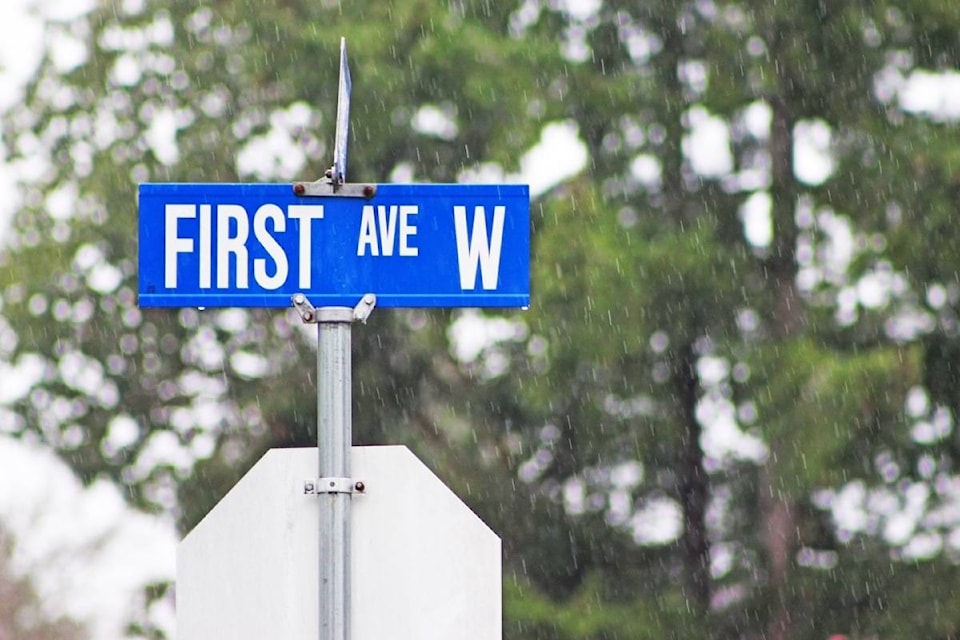Applicants for two of the recently proposed First Avenue developments — one of which failed to move forward at the March 20 meeting — presented to Qualicum Beach council Wednesday (April 5) on the problems and risks of including more retail into their developments.
First up was Morris Baumel for 174 and 180 First Ave. The 15-unit, multi-residential development earned a staff recommendation to be given second reading at the last regular council meeting. Council previously voted in favour of moving the proposal to second reading along with asking the developer to amend the proposal to include commercial on the ground floor facing First Avenue as well as giving those units a commercial character.
Baumel said it seemed council was rejecting the live-work concept for the town homes, which would mean full-on commercial and prevent him from being able to do the townhouse development. This in turn, he said, would mean putting in condominiums above the commercial units, which would increase parking and in the end leave the development with “orphan town homes” facing the commercial parking.
“I just can’t see that as a viable alternative and we’d have to shift over to a complete different model,” Baumel said.
Coun. Neil Horner asked if there could be a compromise with just some of the units being commercial, but Baumel said it would make the development jump to a whole other standard of building.
Baumel said he wanted to revisit the live-work concept because it’s the “perfect kind of answer” to the growing housing problem. Baumel said the town homes would have the ability to be multi-generational with as many as four bedrooms.
“I think there are many, many uses — commercial uses — for those town homes, such as service and medical business, hairdressers, physios … niche retailers, artists, crafts people,” Baumel said.
Baumel said the climate for commercial space has changed with retail shrinking and online shopping growing. He also said most people look to Second and Memorial avenues for shopping, then Primose Street and Beach Road, but Fern Road and First Avenue are the last choices.
Susan Stark, who owns Captivating Details, said sometimes people get lost in the big picture.
“The big picture says these are our boundaries for commercial, but the reality is people shop Memorial and Second (avenues) and when you go off onto First (Avenue), the traffic isn’t going to be there,” said Stark, adding that as an investor and developer you need to look at the reality. “To add commercial because the rules say commercial, doesn’t make sense to me.”
Coun. Luchtmeijer said while today there is a demand for lower-cost residential spaces and a number of empty retail spaces, council’s role is to look at a time frame that isn’t just today. He said 28-30 years ago, there was a reasonable demand to develop the downtown core with retail, but he said to choose to put in residential would be closing the door on the downtown area’s future.
Luchtmeijer said live-work can happen anywhere, not just the commercial core. He said convertible space is a great idea, but it won’t ever address the problems and he doesn’t think it would ever be used as a convertible space in the future.
With room for a counter argument, CAO Daniel Sailland said, when he lived in Quebec residential spaces there became commercial spaces without tearing down the existing buildings. He said the market elements will dictate what is needed.
Maggie Bugg, owner of Crossfit Qualicum Beach and a member of the Qualicum Beach Chamber of Commerce, said a compromise would be good since it’s important to maintain a commercial core in town on the ground floor. She said the inhabitants can choose to have commercial, but it’s also an opportunity for more residential which she said she heard from the gallery at the last council meeting that family and affordable housing was hard to come by.
“They’re having trouble finding affordable housing, and I know they are individuals who could potentially be working from home and so this might be an opportunity for them to hear that some of these places could have upwards of four bedrooms,” Bugg said.
For 210 First Ave., an 18-unit multi-residential development, applicant Jim Grant said he had many of the same issues with retail for his proposal, although his development was voted down at the last regular council meeting. Coun. Luchtmeijer had to excuse himself from the room during the discussion since he owns property near the development.
Grant said he’s not in favour of a strictly residential development and would prefer having a walkable community like council has suggested before. Grant also said he’s willing to create convertible units with a design that would make good commercial units, but have the ability to be residential until there is more of a demand.
Mayor Teunis Westbroek said it seemed council would be more interested with both proposals if there was more of a compromise for commercial space.
